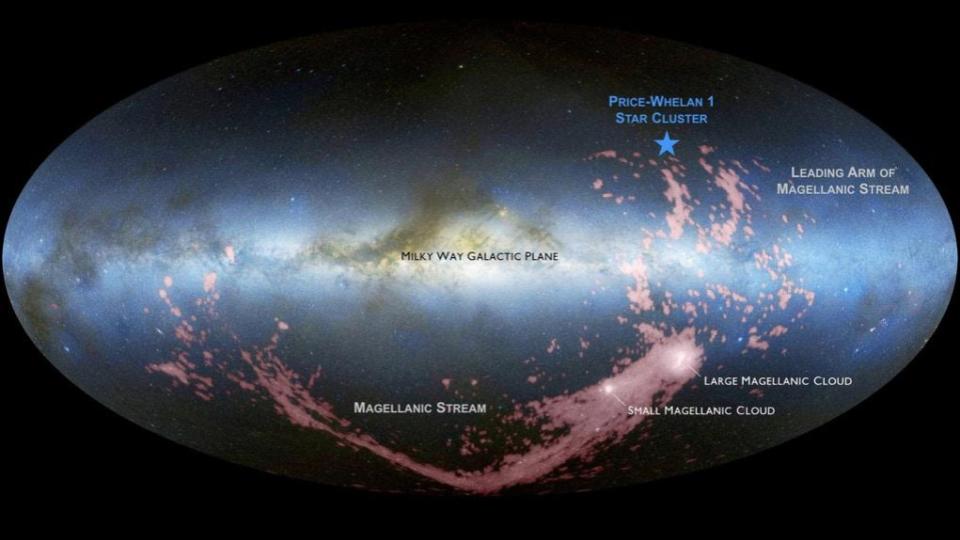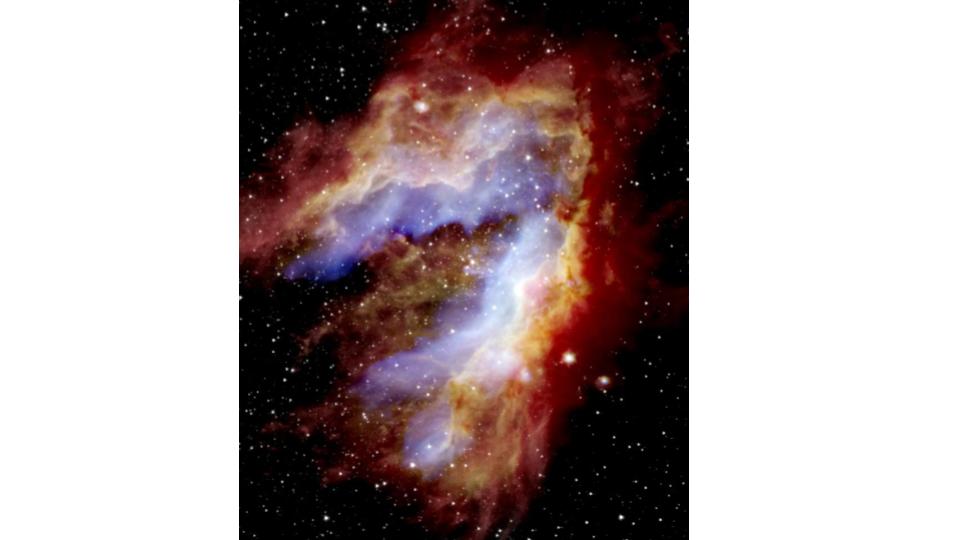The American Astronomical Society’s annual meeting came to an end yesterday, but it is going to take us the rest of this week to get through even the highlights of what has happened. This week was full of controversy, existential crisis, and a diversity of non-stop science.

- The Milky Way’s Impending Galactic Collision Is Already Birthing New Stars (Simons Foundation)
Let’s start with the science. The Daily Space’s Pamela Gay has been on location at the meeting this week, and her favorite story of the week has been the discovery of a young cluster of stars in the halo of the Milky Way. Anyone who has taken an introductory astronomy class has probably seen a diagram of the Milky Way the states our Galaxy’s halo is old, with the oldest stars and star clusters. The disk, with all its dust and gas, is the place to look for star formation.
But if there is any one thing our universe can’t do, that one thing is conform to expectations. While the outer halo of the Milky Way is largely devoid of dense gas and dust there are exceptions, and one of those exceptions turned into a small cluster of a few 1000 stars. The material to form these stars was stripped from the Magellanic Clouds at some point in the past as they gravitationally interacted with the Milky Way. These small irregular galaxies have material pulled out in front and trailing behind them, and this cluster is in the leading arm of material. The cluster is similar in age to the Pleiades cluster: about 117 million years old.
This small cluster gives astronomers a few thousand new stars they can use to gauge the distance to the streams of material associated with the Magellanic Clouds, and these stars allow measurements far more precise than was possible from just looking at the previously observed gas. These new measurements radically changed our understanding of where this stream is, halving the distance to just 90,000 ly away. This new location for the stream of gas changes how we understand the motions of the Magellanic Clouds, and will allow new calculations of how the tiny galaxies have interacted with our galaxy in the past, and whether or not they will fly away in the future. Those calculations will be the subject of future papers, but for now it’s just cool to know that new stars can sometimes be found in even the most barren wastelands between galaxies.

In other news from the AAS meeting, the SOFIA airborne observatory has taken new images of the area around the Swan or Omega nebula, and have revealed newly forming stars shining like pin points from the clouds surrounding the familiar swan. By peeling away the visibly opaque gas with the longer wavelength of light, astronomers were able to determine that star formation in this region has come in bursts over time, starting in the center, and with star formation in the outer regions continuing today.
This is another one of those places that breaks with expectation. We often tell students that star clusters form all at once, with a single burst of star formation that leads to stars of all sizes and the same age. Well, while that may often be true, the Omega Nebula decided it would break with tradition.
Science is in many ways nothing more than a set of overarching guidelines that describe how the rules of physics most often combine to make things happen. While the bulk of the time the halo has old stars, physics still lets there be exceptions. While stars in clusters mostly form all at once, the way clouds collapse and fragment allowed the nebulae to burst more than once. It’s in the exceptions that we often get the most awesome insights, or at the “OH WOW” moments that keep researchers wanting to do research, and to build new telescopes and new spacecraft to explore more parts of the sky.

Credit: NOAO/AURA/NSF
The next big telescope we can all count on is the Large Synoptic Survey Telescope that is being constructed in Chile. Designed to observe the entire visible Southern Sky every few nights, this telescope while give us a statistically driven understanding of the sky, as it buries us in Petabytes of data. This week we learned that the observatory facility is going to be named the Vera Rubin Observatory, in honor of the woman who played a commanding role in the discovery of dark matter. This naming, however, has not been without some confusion and frustration. While a lot of the webpages and articles associated with this announcement have said the Large Synoptic Survey Telescope is being named after Vera Rubin, it is actually the facility, and the telescope itself is being named after a billionaire software developer, Charles Simonyi, who was part of Microsoft and went on to be the first space tourist and the only space tourist to go to space twice. Simonyi donated $20million to the construction of LSST, while Bill Gates donated $10 million, and the total cost is estimated at more than $460 million. This naming of the telescope is not without controversy. We haven’t been able to confirm the details of how this name to happen, but it seems that astronomers may have found a new way to do a bad job naming things, and we’re going to be watching as this story unfolds or unravels, whichever the case may be.
Beyond that, we’ve heard that Betelgeuse continues to dim, has not yet exploded, but is expected to begin returning to its regular behavior by the end of the month… maybe.
And how ever this and all the other stories choose to unfold, we’ll be here to bring them to you on the Daily Space.
<———————>
And that rounds out our show for today.
Thank you all for listening. The Daily Space is produced by Susie Murph, and is a product of the Planetary Science Institute, a 501(c)3 non profit dedicated to exploring our Solar System and beyond. We are here thanks to the generous contributions of people like you. Want to become a supporter of the show? Check us out at Patreon.com/cosmoquestx
Each live episode of the Daily Space is archived on YouTube. If you miss an episode on Twitch.tv, you can find it later on youtube.com/c/cosmoquest. These episodes are edited and produced by Susie Murph.


 We record most shows live, on Twitch. Follow us today to get alerts when we go live.
We record most shows live, on Twitch. Follow us today to get alerts when we go live.